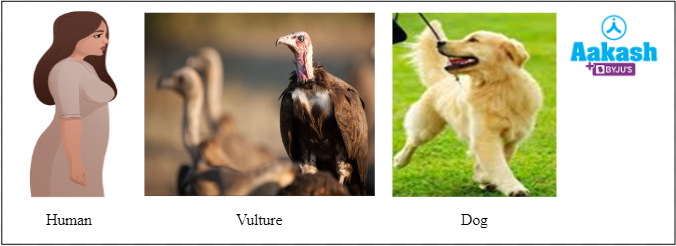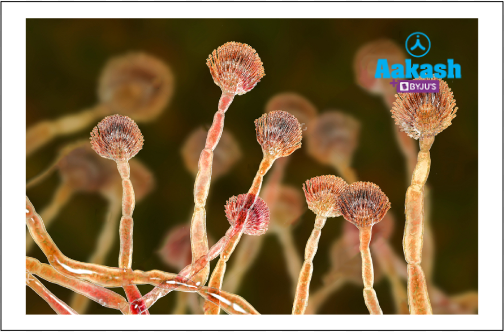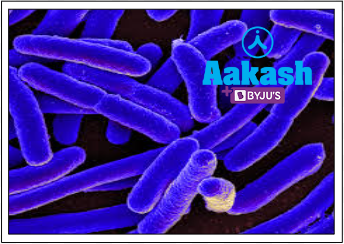-
Call Now
1800-102-2727
Heterotrophic nutrition, Practice Problems and FAQs
We all depend on plants and other animals for our food. Food provides us energy to perform work and sustain life on the Earth. Like us other animals also depend on plants indirectly or directly for their food. It results in the formation of a food chain. A food chain is a series of organisms in which transfer of energy takes place in the form of food from one organism to another organism. It also explains the feeding pattern or relationship between living organisms, flow of energy and nutrients.

Fig: Grazing food chain
Different organisms occupy different levels in the food chain and each level is referred to as trophic levels. All the animals of the food chain are collectively known as heterotrophs as they cannot synthesise their own food.
Some animals obtain their nutrition from dead organic material or debris too. Some (parasite) live on another living animal (host) and obtain their nourishment. Hence there are several types of interactions between animals in the ecosystem like host and parasite, prey and predator, commensalism, ammensalism etc. Let’s discuss different modes of heterotrophic nutrition in this article.
Table of contents
- Mode of nutrition
- Heterotrophic nutrition
- Types of heterotrophic nutrition
- Holozoic nutrition
- Saprophytic nutrition
- Parasitic nutrition
- Heterotrophic nutrition in bacteria
- Significance of heterotrophic bacteria
- Significance of heterotrophs
- Practice Problems
- FAQs
Mode of nutrition
The mode of nutrition is described as the method by which an organism obtains its food. There are many living creatures on the Earth and every living organism has a different way of obtaining food. Therefore, one can say that organisms differ in their modes of nutrition. The organisms can be classified in two broad categories on the basis of their mode of nutrition as follows:
- Autotrophic mode of nutrition
- Heterotrophic mode of nutrition
Heterotrophic nutrition
A heterotroph is a creature that depends on other sources of food, notably plant and animal products because it is unable to produce its own sustenance. Since they cannot create food, all animals, fungi and non-photosynthetic plants are categorised as heterotrophs. Heterotrophs are always secondary or tertiary consumers in a food chain from an ecological perspective. Humans and other vertebrates acquire energy from organic, solid, or liquid food.

Fig: Grazing food chain
Decomposing organic waste is converted into food by fungi and other organisms. Heterotrophs essentially break down complex food into its easily digestible constituent parts.

Fig: Detritus food chain
Types of heterotrophic nutrition
The following categories are used to represent the various types of heterotrophic feeding seen in organisms:
- Holozoic nutrition
- Saprophytic nutrition
- Parasitic nutrition
Holozoic nutrition
Holozoic feeding represents the heterotrophic nutrition in which an organism ingests and internally processes both solid and liquid food. Ingestion, digestion, absorption, assimilation, and elimination are all phases involved in this. Ingestion is the act of taking in food, which is then digested into more basic organic substances. Unwanted and partially digested components are removed after the extraction of beneficial components. All vertebrates are examples of animals that display holozoic nutrition. Even certain single-celled organisms, like Amoeba, display holozoic feeding.

GIF: Holozoic nutrition
Holozoic nutrition in Amoeba
Amoeba show holozoic nutrition. The amoeba surrounds the object by projecting its pseudopodia. By means of the phagocytosis process, it then ingests the food. Digestive enzymes present in the food vacuoles aid in the breakdown of the object into simpler components. The undigested substances are left behind as the digested food is incorporated into the cytoplasm. The food that has been absorbed is used to provide energy for the cell's expansion and growth. The undigested food is expelled out by exocytosis.

GIF: Holozoic nutrition in Amoeba
Types of holozoic organisms
Holozoic organisms are categorised into four types as follows:
- Herbivores
- Carnivores
- Omnivores
- Scavengers
Herbivores
Herbivores are those organisms that rely only on plants for their food requirement. They exist in the range of tiny insects to the large elephant. Herbivores are known as primary consumers and are occupying the second trophic level in a food chain. Examples include cows, buffaloes, deers, and elephants.

Fig: Examples of herbivores
Carnivores
The organisms that eat other organisms are known as carnivores. They eat meat or flesh of other organisms. Carnivores eat herbivores or other small animals and come later in the food chain. Hence they are known as secondary or tertiary consumers. Examples include lions, tigers, leopards etc.

Fig: Examples of carnivores
Omnivores
The organisms that consume plants, as well as animals, are known as omnivores. They occupy generally the tertiary trophic level in a food chain. Examples include human beings, dogs, bears, ants, cockroaches, pigs, vultures, chimpanzees, and raccoons.

Fig: Examples of omnivores
Scavengers
Scavengers are those living organisms that feed on dead biomass, such as meat or rotting plant material. These form the first level of the detritus food chain. Examples include jackals, hyenas, and wolves.

Fig: Hyenas waiting for leftover meat
Saprophytic nutrition
Animals that consume only dead and decaying organisms for energy are known as saprophytes. They are a crucial component of the ecosystem because they recycle nutrients and maintain our surroundings clean. Fungi and bacteria are common examples of saprophytes. They secrete digestive enzymes to the organic matter to break down the complex insoluble organic substance into soluble and simple compounds. These simple compounds are then absorbed and assimilated.

Fig: Fungi
Deacy
The aerobic breakdown of the organic matter is called decay. It usually occurs without the elimination of the bad smelling gases.

Fig: Decay
Fermentation
Anaerobic breakdown of carbohydrates is called fermentation.

Fig: Fermentation
Putrefaction
The anaerobic breakdown of proteins is called putrefaction.
Parasitic nutrition
Parasites live in or on another organism and obtain their nourishment at the expense of their host. The majority of parasites are unhealthy for their hosts and occasionally kill them. Plants and animals can both act as hosts. In contrast to commensalism, the parasite does some damage to the host. The head louse on a human, the Cuscuta plant, ticks on dogs, and tapeworms are a few examples of parasites.

Fig: Parasites
Types of parasites
Parasites are categorised into two major types as follows:
- Ectoparasites
- Endoparasites
Ectoparasites
To obtain the nutrients and energy of the host organism, such parasites remain outside the host body. Examples of ectoparasites include bed bugs, lice, ticks, and mosquitoes.

Fig: Ectoparasite
The parasite Cymothoa exigua is called ‘tongue-eating louse’. It lives in the mouth of the sea fish Lithognathus. The fish's tongue is effectively severed in this case as the blood supply is cut off. This led to the falling off of the tongue. The louse then adheres to the tongue's remnants and effectively serves as the fish's new tongue.
Endoparasites
These parasites remain within the host's body in order to feed on the host's nutrients and energy. Endoparasites include organisms like the tapeworm, liver fluke, Ascaris, Plasmodium vivax, etc.

Fig: Endoparasite - Liver fluke
Heterotrophic nutrition in bacteria
Organic substances serve as the source of energy for heterotrophic bacteria. They are the most prevalent and extensively dispersed kinds of bacteria. They could be either anaerobic or aerobic. They can be found in everything, including food, soil, and water. They aid in the recycling of organic materials. They regulate the decomposition of organic materials. They can also infect humans, animals, and plants as parasites and spread a number of diseases. They can also be found in organisms as symbionts, such as Rhizobium in the root nodules of legumes.
Types of heterotrophic bacteria
Heterotrophic bacteria is categorised into three types based on their habitat, food source and the interaction with other organisms as follows:
- Parasitic
- Saprophytic
- Symbiotic
Parasitic bacteria
Animals or plants may be found to be infected by parasitic microorganisms. Not all parasite bacteria are pathogenic. For example, the human body's microbial flora, which is present in the skin, digestive tract, mucous membranes, and other organs, coexists without doing any harm. Numerous diseases have been linked to pathogenic heterotrophic bacteria. Examples include Salmonella typhi.

Fig: Salmonella typhi
Saprophytic bacteria
Together with fungus, they are the primary decomposers in the detritus food chain. They digest the simple chemicals that result from the breakdown of complex organic materials. They aid in the recycling of nutrients. They aid in biodegradation by breaking down the remains of dead and decaying plants and animals. Examples include Escherichia coli.

Fig: Escherichia coli
Symbiotic bacteria
They live in association with other organisms. Rhizobium found in the root nodules of legumes is an example. Humans and ruminants both have bacteria in their guts that aid in digestion. They support vitamin production as well.

Fig: Rhizobium
Significance of heterotrophic bacteria
Significance of heterotrophic bacteria can be grouped under positive and negative impacts as follows:
Positive impacts
- Saprophytic bacteria helps in the decomposition.
- It does the souring of milk.
- Some bacteria like Nitrosomans help in nitrification. It is the conversion of nitrites to nitrates.
- Bacteria like Azotobacter help in nitrogen fixation.
- Bacteria like methanogens help in gobar gas production.
- Bacteria like Acetomonas help in vinegar production.
- Bacteria like Clostridium acetobutylicum help in the production of alcohol.
- Bacteria like Pseudomonas help in bioleaching and bioremediation.
Negative impacts
- Saprophytic bacteria spoil food.
- Saprophytic bacteria cause rotting of meat, fruits and vegetables.
- Bacteria like Clostridium botulinum cause food poisoning.
- Some bacteria cause disease. Examples include Vibrio cholerae, Bacillus anthracis etc.
Significance of heterotrophs
- In a food chain, heterotrophs form a group of organisms that supply food and energy to other organisms.
- They are found at various levels in the food chain like secondary or tertiary consumers.
- A detritivore is another category of heterotrophic consumer. These organisms feed on the remnants of plants and animals as well as faeces to get their nutrition.
- By recycling trash, detritivores contribute significantly to the preservation of a healthy ecosystem.
- Saprophytes reduce dead and decaying organic materials into less complex elements that plants can absorb and recycle. As a result, they are crucial to preserving ecological equilibrium.
- Symbiotic connections alter the physiology of the interacting partners and have an impact on their ecological dynamics and evolutionary processes, and eventually change how species are distributed on the Earth.
- Additionally, parasites affect the behaviour and fitness of hosts and have the power to control host population sizes, which can sometimes have significant effects on trophic relationships, food chains, competition, biodiversity, and keystone species. These interactions imply that parasites play a significant role in determining the organisation of communities and ecosystems.
Practice Problems
- Identify the organism in which heterotrophic nutrition is seen?
- Cat
- Dog
- Lion
- All of the above
Solution: A heterotroph is an organism that depends on other sources of food, notably plant and animal products, because it is unable to produce its own sustenance. Since they cannot create food, all animals and non-photosynthetic plants are categorised as heterotrophs. Since none of the above mentioned animals are capable of their own food production, they all show heterotrophic nutrition. Hence, the correct option is d.
2. Which plant shows autotrophic as well as heterotrophic mode of nutrition?
- Sundari plant
- Rhizobium
- Amarbel
- Pitcher plant
Solution: The pitcher plant (Nepenthes) obtains nourishment in the same manner as any other plant. By way of photosynthesis it produces food and absorbs water, and minerals from the soil. However, the soil in which it grows lacks nitrogen, it utilises the pitcher to kill tiny insects, which it then digests to obtain nitrogen from the animal. Hence, the correct option is d.

Fig: Pitcher plant
3. Heterotrophs cannot be _______________.
- chemosynthetic
- parasitic
- holozoic
- saprophytic
Solution: Chemoautotrophs are those organisms that use energy from the exergonic chemical reactions instead of light energy to prepare their own food. Examples include Ferrobacillus. Heterotrophs are not chemosynthetic since they are unable to synthesis their own food. Heterotrophs can be of three types as follows:
- Holozoic: Those organisms in which food is ingested and then digested. Examples include dogs, human beings etc.
- Saprophytic: Organisms that obtain nourishment from dead and decaying organic substances. Examples include fungi.
- Parasitic: Organisms that obtain nourishment from a living host. Examples include head louse.
Hence, the correct option is a.

Fig: Ferrobacillus
4. What are the various types of heterotrophic nutrition?
Answer: The heterotrophic nutrition are of three types as follows:
- Holozoic: Those organisms in which food is ingested and then digested. Examples include dogs, human beings, Amoeba etc.
- Saprophytic: Organisms that obtain nourishment from dead and decaying organic substances. Examples include fungi.
- Parasitic: Organisms that obtain nourishment from a living host. Examples include head louse.

Fig: Heterotrophic nutrition
FAQs
- Name a plant that is partially heterotrophic?
Answer: Insectivorous plants are partially heterotrophic. Examples include the pitcher plant (Nepenthes), Venus flytrap etc. The pitcher plant obtains nourishment in the same manner as any other plant. By way of photosynthesis, it produces its own food and absorbs water, and minerals from the soil. However, the soil in which it grows lacks nitrogen, it utilises the pitcher to kill tiny insects, which it then digests to obtain nitrogen from the animal.

Fig: Insectivorous plants
- In which organism absorptive heterotrophic nutrition is seen?
Answer: Fungi exhibit absorptive heterotrophic nutrition because they obtain nutrition from the host through a special structure called haustoria.
- Name the parasitic fungus that destroys the wheat plant?
Answer: Puccinia is a parasitic fungus that destroys the wheat plant.

Fig: Puccinia
- What is the mode of nutrition in bacteria?
Answer: The mode of nutrition in bacteria is autotrophic (Cyanobacteria) as well as heterotrophic (Escherichia coli).

Fig: Autotrophic and heterotrophic bacteria



